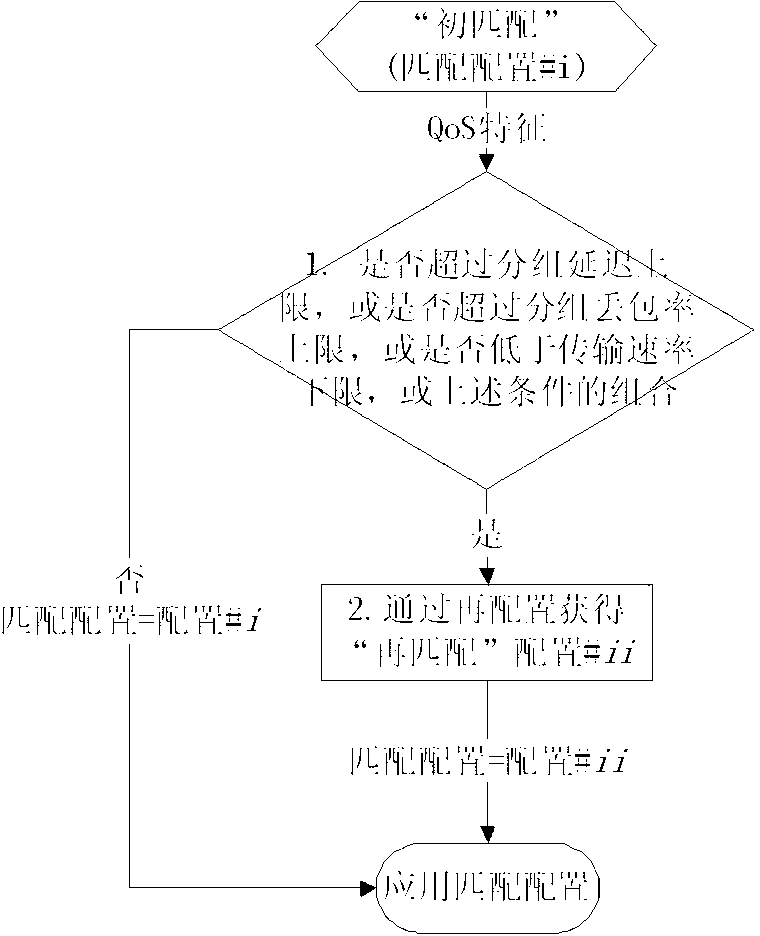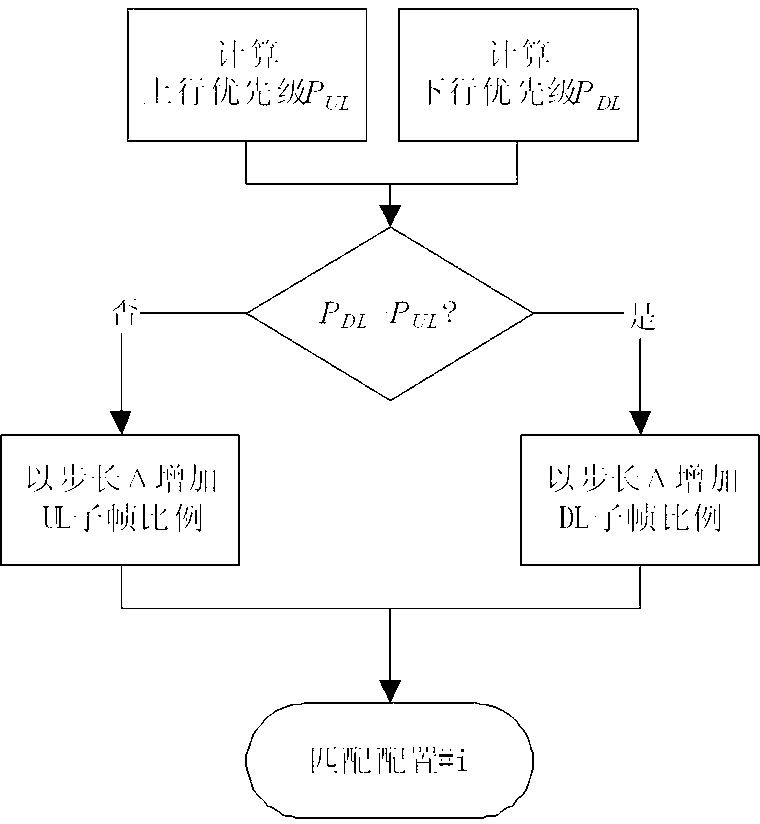Method for dynamically configuring uplink and downlink subframe proportion of TDD (time division duplex) base station based on business load
A technology of business load and dynamic configuration, applied in the field of communication, can solve problems such as not being able to reflect the business characteristics of TDD base stations well, and achieve the effects of improving network system performance, high efficiency, and strong applicability
- Summary
- Abstract
- Description
- Claims
- Application Information
AI Technical Summary
Problems solved by technology
Method used
Image
Examples
Embodiment 2
[0050] The "re-matching" adjustment process in the method of Embodiment 2 is described as follows: when the uplink or downlink "service QoS characteristics" trigger the threshold value defined above, a certain "adjustment step" (marked as "Δ") is used to compare the benchmark configuration #i Make adjustments in the direction of increasing uplink subframes or increasing downlink subframes. A "unit step" is defined as adjusting a "configuration level" in the direction of increasing or decreasing the UL subframe. Take TD-LTE as an example, as shown in Table 2, assuming the baseline configuration# i Configure for TDD # 6 (the level of the number of DL subframes is 2) and the required adjustment step size Δ=1, then when the “rematching” process needs to further increase the number of DL subframes, TDD configuration #1 (DL Subframe number level is 3) as a new configuration# i . In addition, the "adjustment step size" can be selected according to how much the "service QoS char...
PUM
 Login to View More
Login to View More Abstract
Description
Claims
Application Information
 Login to View More
Login to View More - Generate Ideas
- Intellectual Property
- Life Sciences
- Materials
- Tech Scout
- Unparalleled Data Quality
- Higher Quality Content
- 60% Fewer Hallucinations
Browse by: Latest US Patents, China's latest patents, Technical Efficacy Thesaurus, Application Domain, Technology Topic, Popular Technical Reports.
© 2025 PatSnap. All rights reserved.Legal|Privacy policy|Modern Slavery Act Transparency Statement|Sitemap|About US| Contact US: help@patsnap.com



